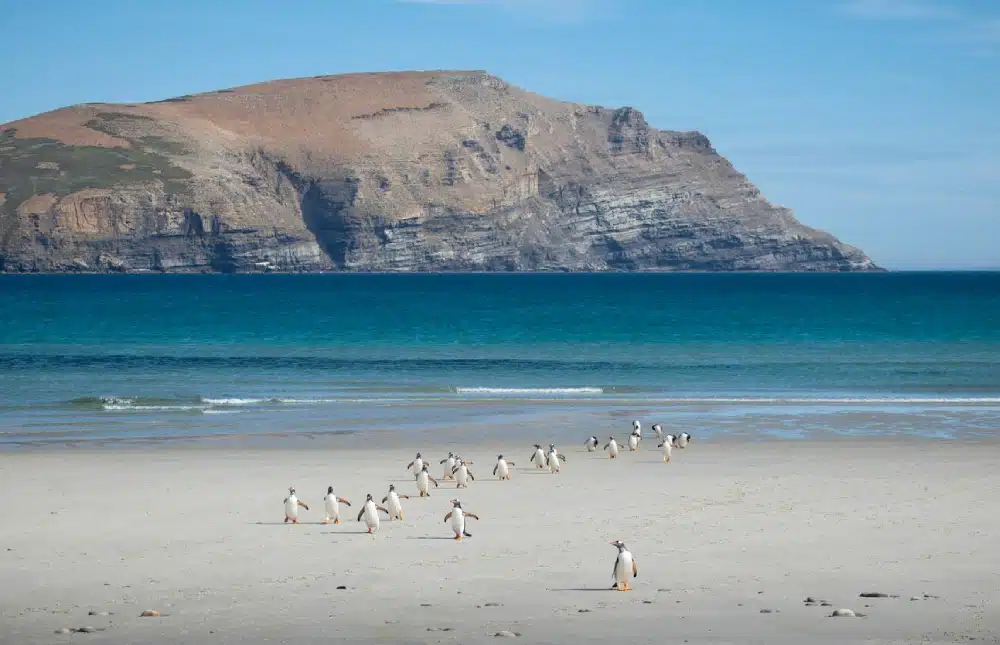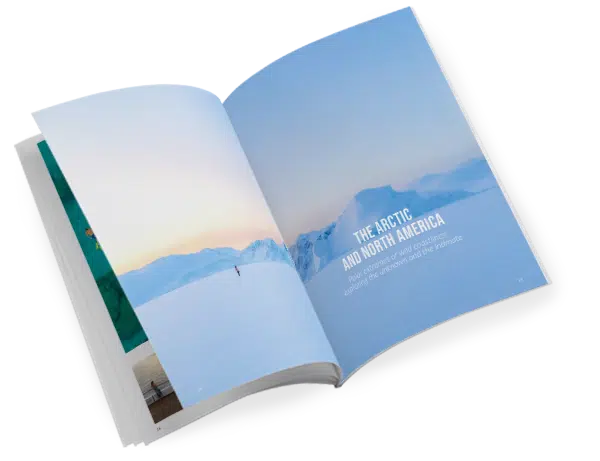A natural paradise at the ends of the earth
As beautiful as they are rugged, they emerge to the east of the Tierra del Fuego archipelago, at the southernmost tip of the South American continent. Numbering around 750, these islands and islets are swept by strong winds known as the Furious Fifties. Welcome to the Falkland Islands, a British archipelago at the gates of Antarctica that offer superb sanctuaries for wild nature and absolutely fantastic wildlife.
European shards on the edge of Antarctica
The Falkland Islands, which were uninhabited until the 18th century, are now home to some 3,500 people, almost 2,500 of whom live in Port Stanley, the picturesque capital that has an old British village feel to it. This is where your exploration begins. Start by strolling through the capital’s streets lined with houses featuring colourful roofs and well-kept gardens, popping into a few pubs and chippies (fish and chip shops) along the way.
Don’t miss the Falkland Islands Museum on the historic site of the shipyards, where paintings, sculptures and shipwrecks reveal the archipelago’s rich past. Christ Church Cathedral, meanwhile, is one of the world’s smallest Anglican churches, and certainly its southernmost. At the foot of its bell tower is an arch built from the jawbones of two enormous whales!
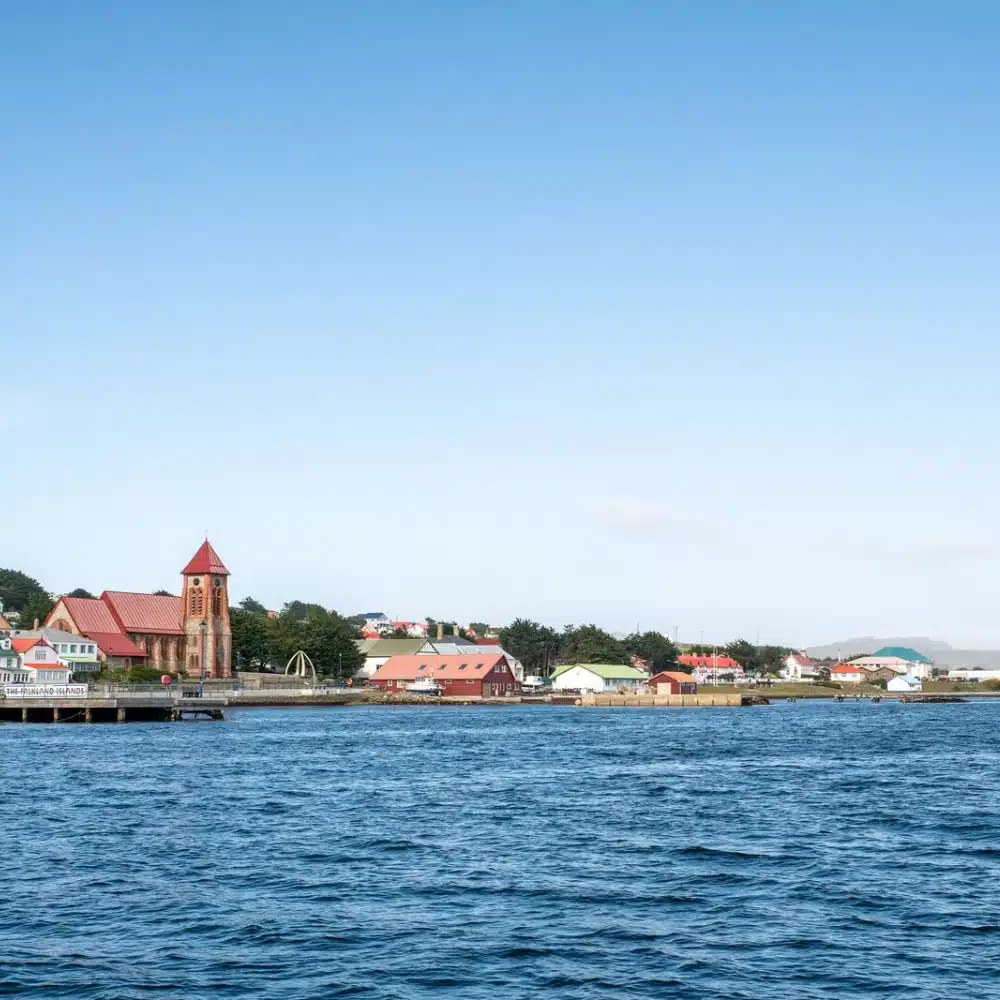
An archipelago at the edge of the world
The Falkland Islands in English, Les îles Malouines in French, Las Islas Malvinas in Spanish… Three names that signal a stigmatic, eventful history, just like the natural elements that unleash themselves upon the islands. They emerge not far from Cape Horn, in the fiery latitudes of the Furious Fifties on the way to South Georgia and the Antarctic Peninsula. The two main islands, East Falkland and West Falkland, are separated by a strait of water.

Jean Krug, glaciologist and PONANT expedition leader
The call of nature
A mere few steps outside the city are enough to transport you to an absolutely extraordinary ‘ends of the earth’ realm where human presence fades away to leave the pure, raw beauty of an exceptional natural environment. A powerful natural landscape to which you will feel irresistibly drawn, as if gripped by its invigorating air, its soothing silence and the disconcerting feeling of stepping onto an unspoilt world.
The rugged coastline along which the rough waters of the Atlantic break gives way to gently rolling hills inland. “I love these extraordinary colours: the blue sea, the white beaches, the meadows in hues of yellow and green,” explains Jean Krug. “I love the bracing yet gentle air, the salty smell of the sea spray lifted by the wind and the tall grasses bent by gusts, rippling like waves on dry land.”
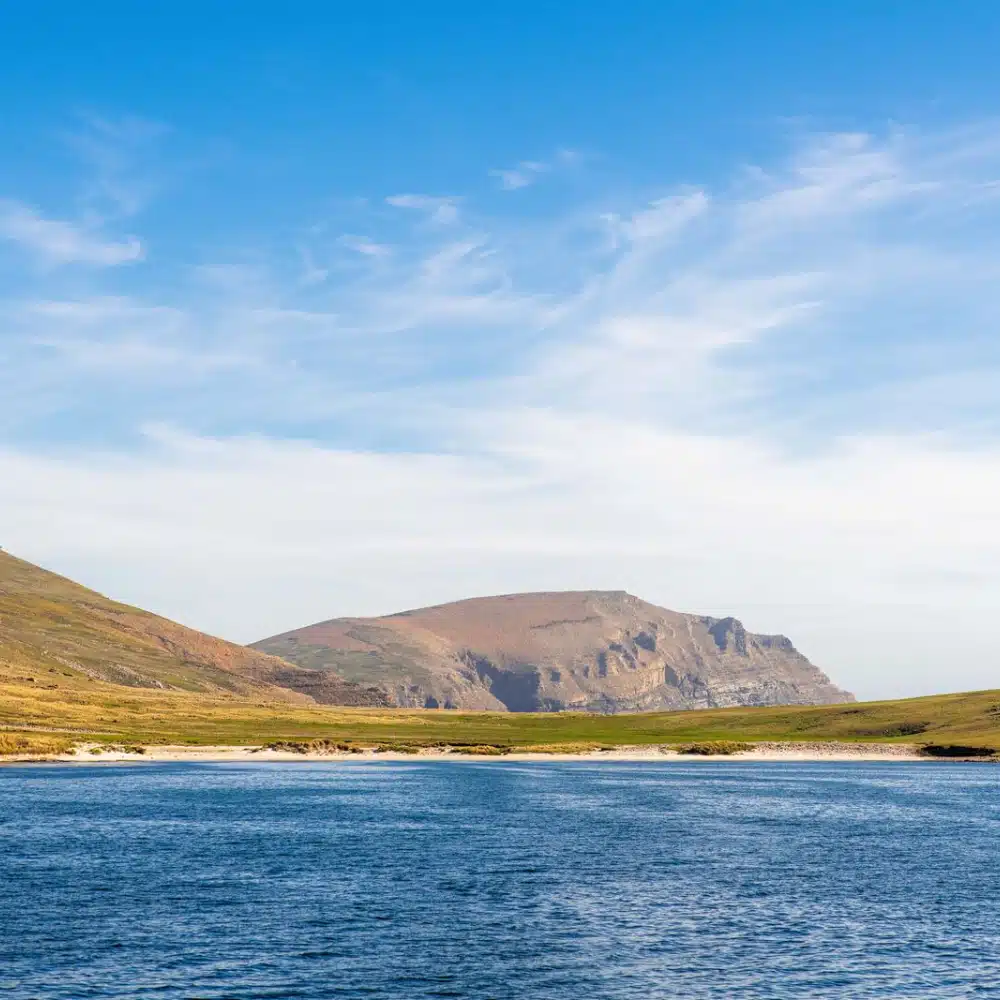
The beautiful flora on the Falkland Islands
The Falkland Islands are also home to almost 350 different plant species, around 170 of which are indigenous and around fifteen of which exist nowhere else on earth. Starting with Olsynium filifolium or ‘pale maiden’, the archipelago’s most prized flower and its national emblem. Tussock grass, or Poa flabellata, is everywhere: on this land where no trees or shrubs will grow, this tall , or salt-loving, grass plays an essential role in offering a natural habitat.
A paradise for Falklands fauna
These include mammals, such as fur seals, Commerson’s or Peale’s dolphins, elephant seals or sei whales, and, above all, hundreds of thousands of breeding and endemic birds. One such inhabitant is the striated caracara, also known as the Johnny rook, one of the rarest birds of prey in the world. The albatross family, with individuals from the shy albatross, Atlantic yellow-nosed albatross, grey-headed albatross and black-browed albatross sub-groups, is also one of the most famous species to be found on the British archipelago, home to some of the largest breeding sites in the world.
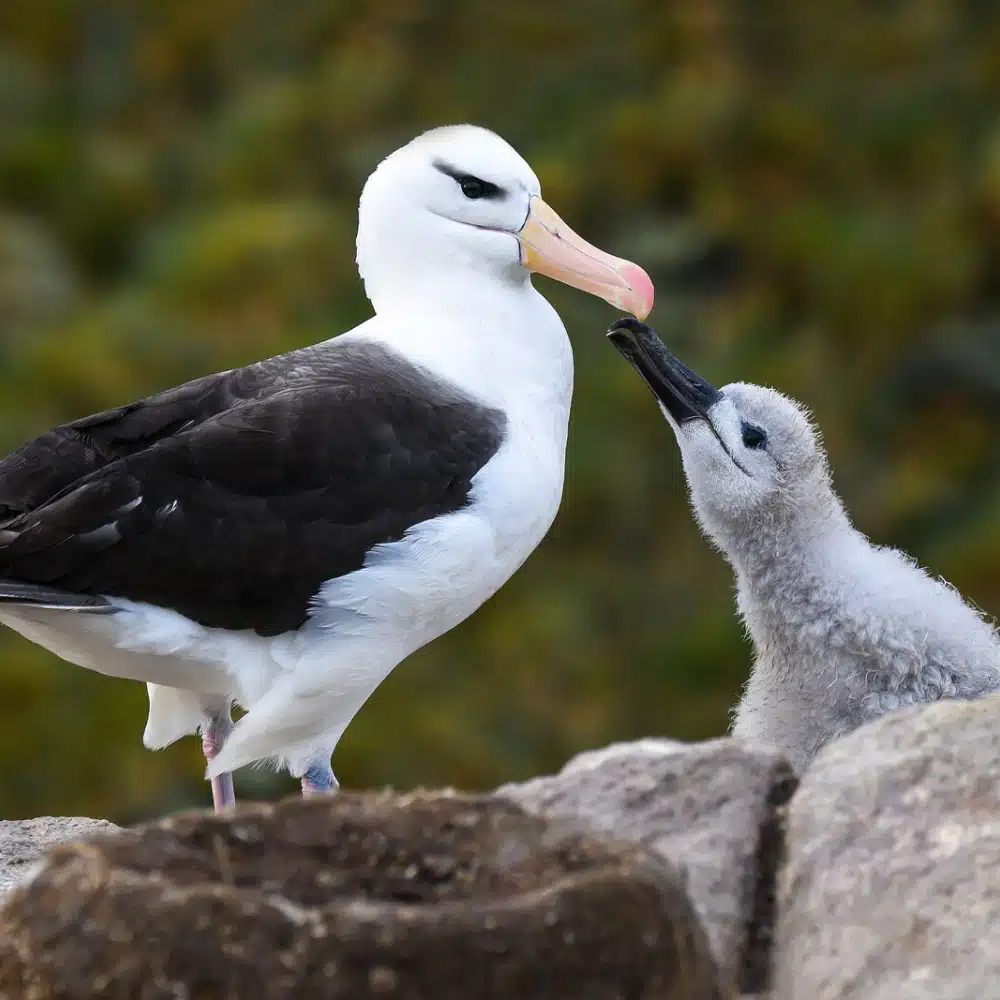
A promised land for the black-browed albatross
The black-browed albatross is a quiet force in the sky whose life is essentially pelagic, i.e. lived out on the high seas. As soon as its breeding season arrives, it chooses the Falkland Islands as its preferred breeding ground, with nearly 70% of them nesting in the archipelago! Once grazing land, Steeple Jason Island, in particular, now has the largest colony of black-browed albatrosses.
Penguins reign supreme in the Falklands
The Falkland Islands are also home to five species of penguins: Magellanic penguins, crested penguins, gentoo penguins, numerous macaroni penguins and, above all, the second largest colony of king penguins in the world. You can’t miss them if you venture to Volunteer Point, a headland on the east coast of East Falkland Island, or ‘the Neck’, the name given to a narrow strip of sand linking the two parts of Saunders Island.
Dressed in the understated elegance of their black and white plumage, you can see them proudly waddling in groups across tussock meadows or beaches, their heads, streaked with orange, held high. The youngest, recognisable by their brown feathers, are sometimes more daring than their elders, and can often be seen strolling over to greet their passing visitors.


Jean Krug, glaciologist and PONANT expedition leader
Photos credits: ©StudioPONANT/Olivier Blaud /Adrien MORLENT/Laure Patricot /Nathalie Michel /Alexandre HERBRECHT

Head for the Falkland Islands
Embark on a polar expedition with PONANT

